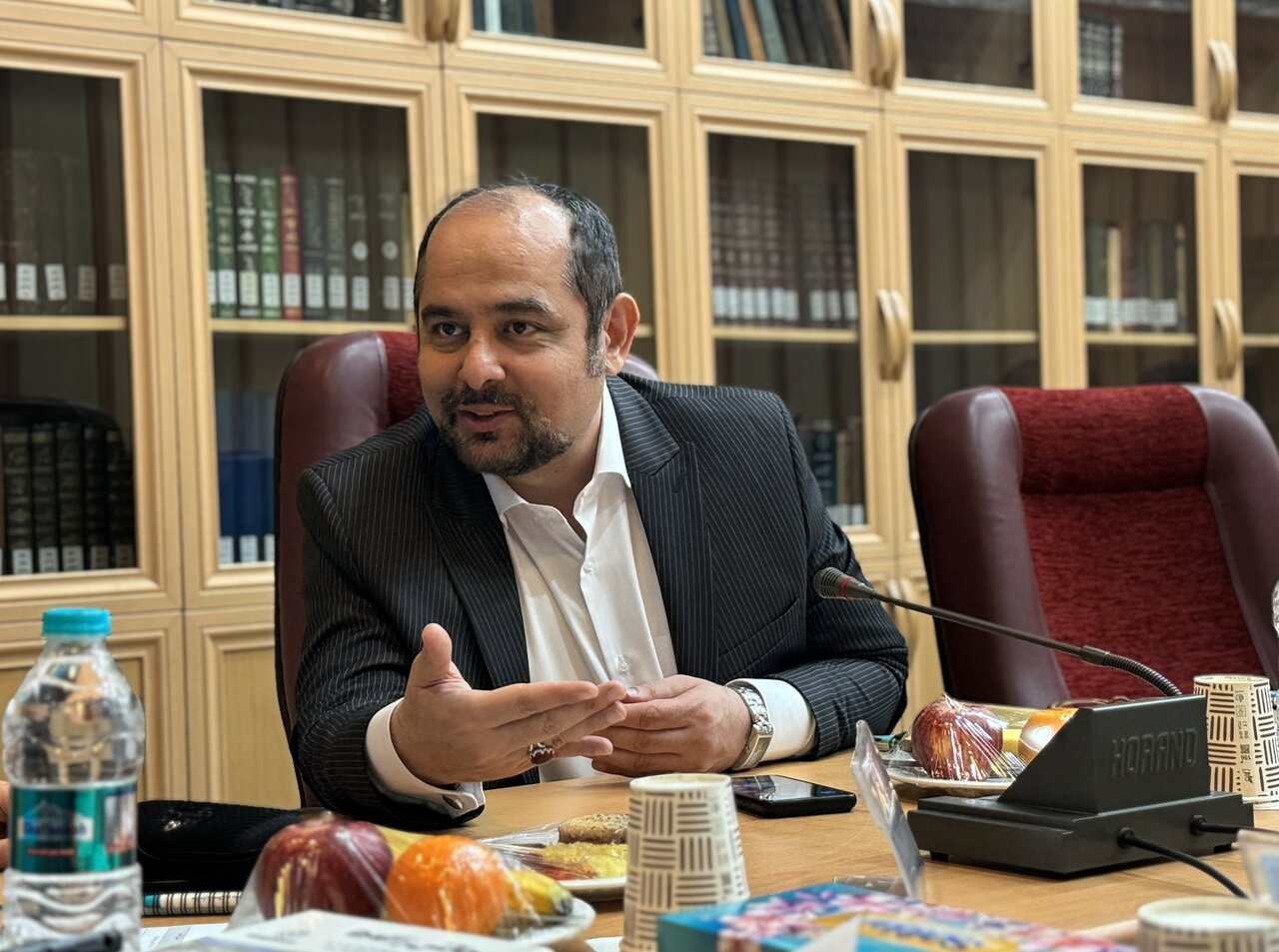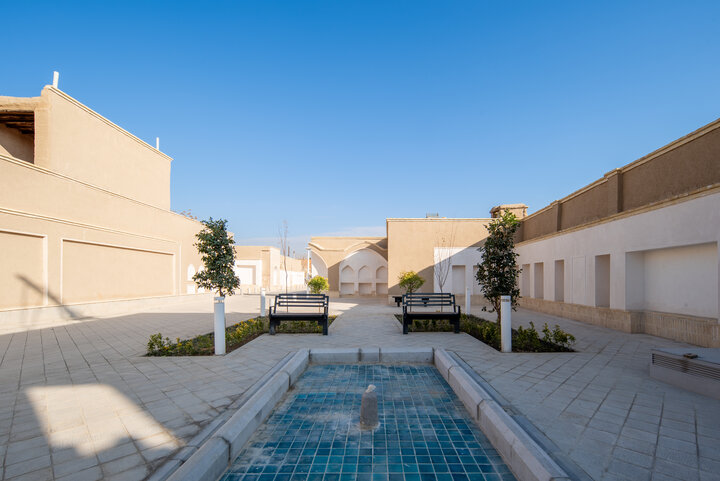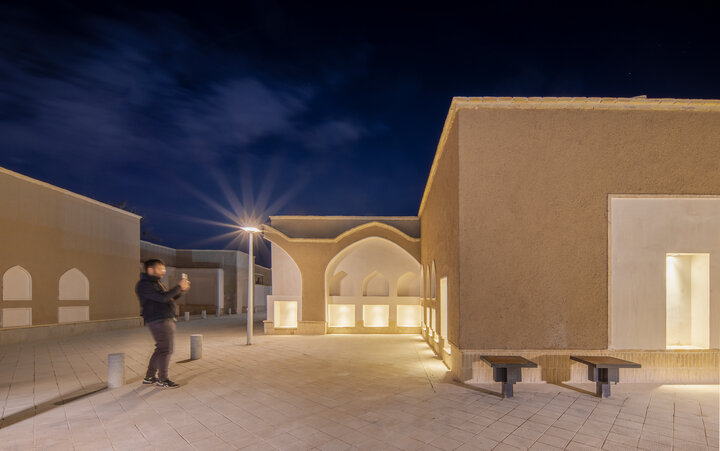From preservation to prosperity: CEO unveils Isfahan’s restoration strategy

ISFAHAN - Mohammad-Ali Izadkhasti, the CEO of Isfahan’s Urban Revitalization Organization, recently spoke to the Tehran Times about the organization’s commitment to reviving Isfahan’s rich historical fabric.
He opened the conversation by highlighting the organization’s “successful” revitalization of Jolfa, a historical district whose latest restoration journey began two decades ago.
“Jolfa neighborhood comprises numerous houses dating back to the Safavid era, which adds to its richness. Due to the high value and prices of land in the neighborhood, there was a profitable inclination toward demolishing old houses and constructing multi-story apartments, and many owners of old houses were motivated to pursue this,” Izadkhasti emphasized.
“The revival of Gozer-e Aqa Nourollah Najafi was not simply a reconstruction; it represents a meticulous preservation endeavor that salvaged centuries-old architectural elements.”Detailing the extensive restoration efforts, he mentioned, “Our organization has been the driving force behind most restoration work in Jolfa over the past twenty years…. We began that project by starting from the pavement of streets, alleys, and squares. Subsequently, we embarked on an urban restoration and beautification project to emphasize the difference.”
“Throughout this process, we aimed to preserve all historical elements of the urban fabric.”
Elaborating on the evolving mindset towards local properties, Izadkhasti noted, “Owning a historical house is now seen as an asset, discouraging owners from considering demolition. Transforming these houses into traditional cafes, guesthouses, or boutique hotels has the potential to generate substantial income for owners.”
Thus, the initial step of our organization’s presence in Jolfa was to elevate the quality of the urban space, resulting in the strengthening of historical literature, subsequently boosting tourism, and ultimately leading to economic contributions to local communities, which encouraged them to safeguard this invaluable cultural heritage, he said.
“By undertaking these initiatives, we managed to preserve a significant number of historical houses with the help of the people.”
In response to a question about the organization’s ongoing projects, Izadkhasti said, “Our current focus extends to neighborhoods around the Jameh Mosque of Isfahan. We aim to enhance urban spaces, eliminate visual clutter, and create an appealing neighborhood to attract investors. This approach aims to replicate the successful Jolfa model by encouraging investors to restore historical houses, fostering a tourist-friendly environment around the Jameh Mosque.”
He then shed light on the recent inauguration of the meticulously restored “Gozer-e Aqa Nourollah Najafi”, a centuries-old alleyway, situated near the UNESCO-designated Naghsh-e Jahan Square, a very touristic location that amplifies its significance.

A view of Gozer-e Aqa Nourollah Najafi, a newly restored alleyway located near the UNESCO-designated Naghsh-e Jahan Square in Isfahan.
“In previous years, it led to the destruction of twelve historical houses in this passageway but was ultimately halted by the pursuit of cultural heritage activists and the declaration of the decree by Isfahan’s Supreme Council of Architecture and Urban Planning.”
Recounting the transformation of a once-ruined space into a pedestrian-friendly urban zone, Izadkhasti emphasized the design’s homage to historical elements. He highlighted the revival of green spaces, formerly gardens of demolished houses, now landscaped with trees along the passage.
“Based on aerial photographs from 1356, this area contained several green areas, which were in fact tree-lined yards of the then houses, now revived and planted with trees in the new form of this passage.”
Describing a previous development plan for the passageway to become a local access route, he noted that the project was finally canceled due to social demands, coupled with the Supreme Council’s intervention, which suspended the street construction project.

“The revival of Gozer-e Aqa Nourollah Najafi was not simply a reconstruction; it represents a meticulous preservation endeavor that salvaged centuries-old architectural elements, Izadkhasti stated.
Expanding on the outcome derived from numerous brainstorming sessions, Izadkhasti emphasized the establishment of a pedestrian-centric space to support the eastern and southern sides of the historical Imam Square and cater to local residents. This approach was deemed the most effective plan for rejuvenating this passageway.
He highlighted the integration of remnants of past arches and arcades into the revitalization plan for the passageway. “We conserved remnants of demolished historical homes, seamlessly integrating them into the passage. This effort creates an ambiance reminiscent of strolling among historical houses.”
In addition, Izadkhasti underscored the diligent work of native young architects who skillfully merged ancient designs with modern expertise. Their dedication ensured the safeguarding of segments of centuries-old walls, arches, house foundations, facades, house yards, niches, arcades, and house gardens. Amidst the renovated cobblestones, these preserved fragments now stand as silent yet eloquent reminders of Isfahan’s bygone eras, inviting passersby to immerse themselves in the forgotten moments of the city’s storied past.

Izadkhasti said the recent measures were taken, based on the Supreme Council’s decree, to organize the area. Notably, a local access route for residents and a 5.5-meter-wide passage for emergency vehicles have been established, ensuring controlled access exclusively for local residents.
In the end, he expressed hope that the revitalization of various corners of Isfahan’s historical fabric, carried out with the assistance and collaboration of citizens and investors, would become crucial in preserving and safeguarding this centuries-old heritage for future generations. Additionally, he anticipated that this effort would significantly boost tourism in this historically renowned city, often referred to as “half the world”.
Half the world?
Isfahan, once the nucleus of international trade and diplomacy in Iran, stands today as one of Iran’s premier tourist destinations for compelling reasons.
In 1587, Shah Abbas the Great ascended to rule over Persia’s Safavid dynasty and handpicked Isfahan as the pinnacle of his reign, endeavoring to surpass all other cities. His era witnessed an unparalleled transformation, marked by the construction of an impressive array of palaces, mosques, gardens, and bridges.
Subsequent rulers under Shah Abbas continued the city’s embellishment. Isfahan, then inhabited by 600,000 people, boasted an astounding 162 mosques, 48 colleges, 273 public baths, and an impressive count of 1,802 caravanserais—sprawling courtyards flanked by structures, serving as medieval hubs offering respite for travelers, their camels, and accommodations.
The city’s allure lies in its plethora of architectural marvels—unrivaled Islamic structures, vibrant bazaars, museums, Persian gardens, and tree-lined avenues. Isfahan beckons explorers to wander its labyrinthine bazaars, luxuriate in its serene gardens, and engage with its warm-hearted populace. Notably, it is revered not only for its wealth of historical bridges but also for the life-sustaining Zayandeh Rud River, a source of original beauty and fertility for the city.
The expansive Imam Square, renowned as Naghsh-e Jahan Square (meaning “Image of the World”), stands as one of the world’s largest squares (500m by 160m) and an exquisite embodiment of urban design. Erected in the early 17th century, this UNESCO-recognized square hosts Isfahan’s most captivating landmarks.
Such a warm development led to the creation of a motto: “Isfahan nesfe Jahan”— “Isfahan is half the world.” This poetic adage alludes to the belief that witnessing Isfahan equates to experiencing half the globe.
AFM
Leave a Comment